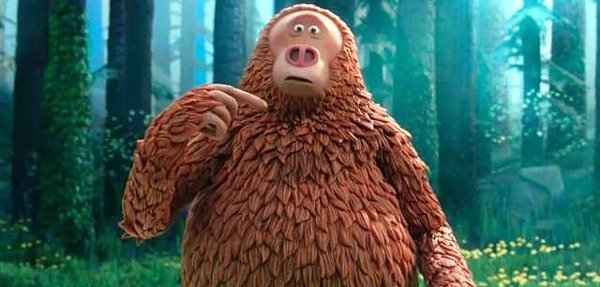To the surprise of no one, the amount of work put into a single frame of Missing Link is breathtaking. The time period allows for the creation of sets bursting with detail, as dusty books, specimens, and maps clog up high-ceilinged, wood-paneled libraries and studies. In the natural world, the Himalayan scenes are beautiful, and Laika’s requisite end-credits peak behind the curtain only scratches the surface at the labor and artistry required to make these kinds of creations. Missing Link represents another leap forward for the studio, as the animators surely learn new things from their previous productions to take forward. The film, however, misses out on a structure-function pair with Susan making his way through the world, as he’s a little unimpressed with his new encounters. Synching up an awestruck character with a film worthy of awe seems like an easy connection to make, and Missing Link leaves the wonder solely to the viewer.
For the characters moving through this stop-motion wonderland, Missing Link is more rote than most Laika outings. Written and directed by Chris Butler, who did the same for Paranorman, the main trio consists of stock tropes. Sir Lionel is a gung-ho leader anxious to prove his value, Susan is a doofy fish out of water, and Adelina suffers from the Tasha Robinson-coined Trinity Syndrome, a strong female character type where all the strength is delineated in her intro and then the film loses interest in her. The cast, particularly Galifinakis, find humor in their dialogue but they’re unmemorable characters when stacked up against what Laika’s done previously. Missing Link’s biggest character contribution is in its villain. Voiced by Stephen Fry, Lord Piggot-Dunceby is the head of the society Sir Lionel aims to be a part of, and the film invests the character with all the paternalism and hypocrisy of that moment of history. Anything that puts his power in question, like suffrage or the humility inherent in evolution, must be derided as nonsensical, as threats to civilization that must be quashed with barbarism if necessary. Outside of the sets themselves, Lord Piggot-Dunceby is the most complex thing to emerge from Missing Link, a monster who cloaks his ignorance with titles and his villainy with rich mahogany.
Missing Link has its gaps and missed opportunities, but it’s still larded with humor and action setpieces that are mostly successful. There’s a vaudevillian streak to the jokes that are obvious, but work anyway based on their time-tested pedigree and the delivery of the cast. A climactic struggle forgets the previous jokes made about Susan’s considerable size, but with that excepted, the film moves swiftly to its conclusion at the roof of the world. With some more fine-tuning of the protagonists, Missing Link might’ve joined the ranks of Laika’s best, but the studio’s greatest financial failure is also its least impressive film. When a studio does such great and consistent work, that’s not such an insult, but it creates an expectation of striving for greatness, not just onscreen but on the page as well. B-

 RSS Feed
RSS Feed